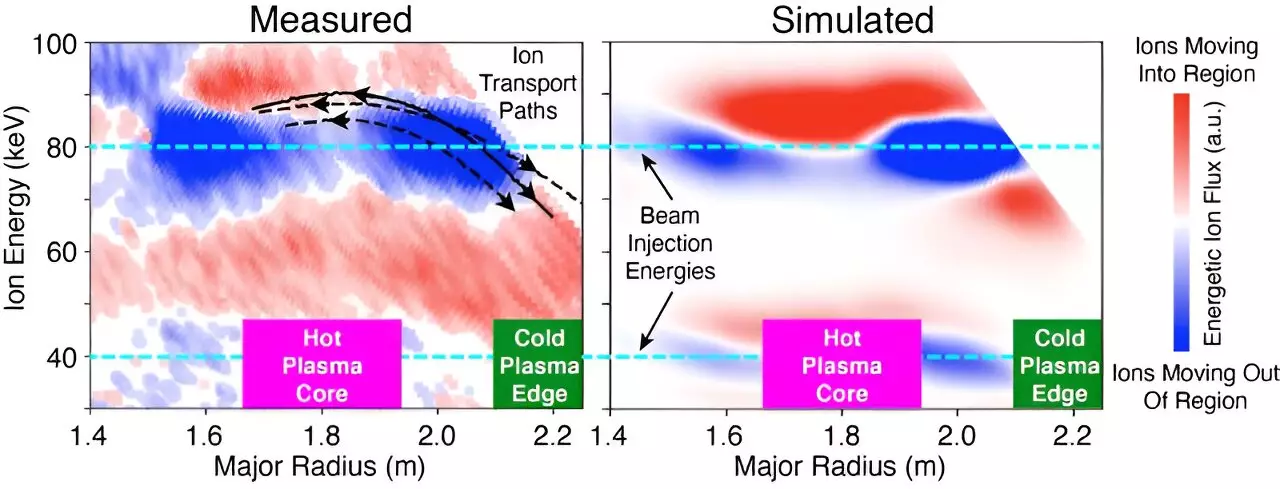Creating and maintaining confinement of fusion-produced energetic ions is critical for the successful production of energy in a burning plasma. However, this task is not without its challenges. Fusion plasmas are characterized by a wide array of electromagnetic waves that can actually push energetic ions out of the plasma. This then leads to a reduction in the heating of the plasma from fusion reaction products, ultimately bringing an end to the burning plasma state.
Recent measurements at the DIII-D National Fusion Facility have provided groundbreaking direct observations of energetic ions in a tokamak. Combining these measurements with advanced computer models of electromagnetic waves has provided researchers with an improved understanding of the interplay between plasma waves and energetic ions in fusion plasmas.
Plasma physics and fusion research are transitioning from experimental facilities to the development of demonstration power plant designs. To ensure the success of this transition, accurate simulations and predictive tools are needed to determine how power plant designs will perform. While most current facilities do not produce burning plasmas, researchers are still able to understand a significant portion of the relevant physics and are actively working on developing simulations that can reproduce observed experimental behavior.
The recent research conducted at the DIII-D National Fusion Facility has made significant strides in accelerating the development of models that accurately account for all relevant wave-ion interaction dynamics. By making new measurements of energetic ion flow in the DIII-D tokamak, researchers can more effectively design fusion plasma scenarios based on predicted ideal interactions between waves and ions.
The advancements in understanding wave-particle interactions in fusion plasmas not only have implications for the design of fusion power plants but also for improving the reliability and performance of satellites. The research conducted at the DIII-D National Fusion Facility has demonstrated the accuracy of first-principles models in describing underlying physics, thereby providing a more detailed understanding of the interplay between plasma waves and energetic ions in fusion plasmas. This understanding can then be applied to outer space plasma simulations, potentially enhancing the reliability of future satellite missions.
The first-ever capability to observe the flow of energetic ions in a tokamak has been made possible through the use of a new diagnostic system called the Imaging Neutral Particle Analyzer (INPA). Developed over a multi-year effort, the INPA measures the energy of neutral beam-injected energetic ions across time and spatial position within the tokamak. By coupling these measurements with advanced high-performance computing simulations, researchers gain a comprehensive understanding of both the spectrum of electromagnetic waves and their interactions with energetic ions in fusion plasmas.
The improved understanding of wave-particle resonant interaction processes achieved through fusion plasma research also extends to the study of outer space plasma. For example, interactions between electromagnetic ion cyclotron (EMIC) waves and electrons can lead to the acceleration of electrons, causing malfunctions in satellites. By simulating outer space plasma using the insights gained from fusion plasma research, future satellite missions may benefit from increased reliability.
The recent measurements and advanced computer models utilized at the DIII-D National Fusion Facility have greatly enhanced our understanding of the interplay between plasma waves and energetic ions in fusion plasmas. This newfound knowledge not only contributes to the development of more accurate simulations for fusion power plant designs but also holds the potential to improve the reliability of future satellite missions. The path towards achieving efficient fusion energy production and exploring outer space plasma is clearer than ever before.


Leave a Reply